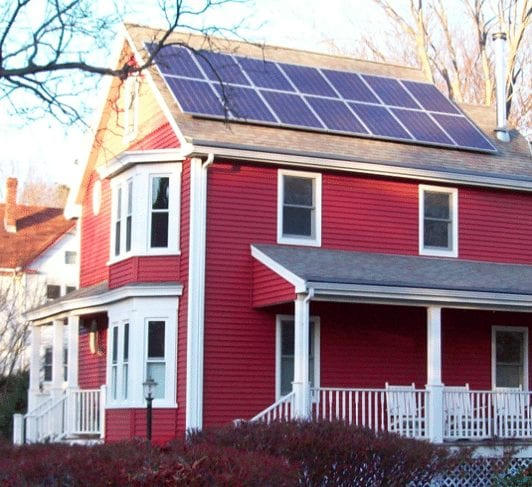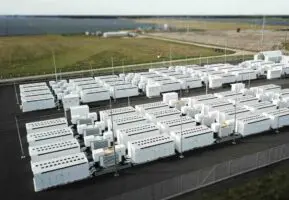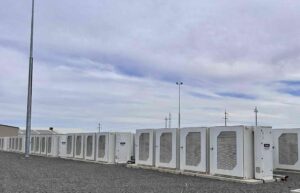For all the talk about the plunging cost of rooftop solar panels, and the multiple failures of solar manufacturing companies, the development that energy utilities are watching with most concern is the emergence of new companies that find ways of delivering those products to the mass market.
That’s what makes the float of US solar company SolarCity, so interesting. Amid the carnage at the upstream end of the solar industry, and the failures of Solyndra and Australia’s Sliver technology, SolarCity is setting out to prove that there is money to be made, and a solid business model, at the downstream end.
It may only be seeking to raise $200 million, a drop in the ocean in a trillion-dollar global energy industry, but its potential impact will be much greater than its size.
The regulatory filings of SolarCity are intriguing because it articulates some of the game-changing concepts that are proposed by the solar PV industry. Put simply, companies such as SolarCity exist because they can offer customers a means to pay less for electricity. That is not a promise that the incumbent utilities feel inclined, or capable to make. And that is the game changing nature of their proposal.
SolarCity was formed in 2006 by the Rive brothers, Lyndon and Peter, who just happen to be cousins of Ebay founder and Tesla electric vehicle maker Elon Musk, who is chairman and has a 30 per cent stake.
Their model has been to tap into deep pocketed investors to fund a leasing package for consumers – offering them the opportunity to install rooftop solar at little or no cost, and benefit from the reductions in the electricity bill. It’s based on the premise that while renewables may not yet be able to compete with 30-year old coal-fired gas stations at the utility-scale, solar panels can deliver cheaper electricity to the consumer than the current grids. Hence, the term: Socket parity.
“We believe that a customer’s decision to buy renewable energy from us is primarily driven by their desire to pay less for electricity,” the company says in its IPO filings. And it says there is a big enough market to target.
Out of a total retail electricity market in the US of $368 billion, around $58 billion is sold at retail prices of 15c/kWh or more, SolarCity says. That’s its target market. But it says this market will likely to grow to $170 billion in the next five years, as the cost of grid-based electricity rises (notwithstanding some of the fanciful and mistaken assumptions about the impact of gas on the US electricity market).
This graph below highlights the savings that it says it can deliver in three of its key markets – Arizona, California and Hawaii. Note how the retail electricity prices compare with those in Australia – little wonder that some of those firms such as Sungevity are targeting Australia, and that Yingli sees Australia as the biggest mass-market in the world.
So far, the company has raised $1.57 billion from the likes of Credit Suisse, Google, and Bancorp to use for leasing products to customers. It has a portfolio of installed and contracted capacity of around 200MW on 33,000 rooftops, and still has some $648 million of that to spend. It is also expanding into electric vehicle charging stations and energy monitoring software, and into on-site battery storage.
Of course, things can go wrong. A prospectus in Australia is usually a glossy affair about why everything will go right, with a small chapter on the risks. The regulatory filings in the US are a detailed list of everything that could possibly go wrong, and with SolarCity’s model, there is plenty that can.
Someone might come up with a killer technology that delivers electricity at a cheaper cost than rooftop solar; rising interest rates; or an oversupply of electricity. But the biggest risk is in regulations, and whether local authorities will impede the rollout of solar to protect the interests of the incumbents.
SolarCity notes that in California, for instance, the rollout of net metering solar PV is limited at 5 per cent of aggregate peak demand. If that and other states don’t raise these net metering limits, then its demand will be limited.
SolarCity sees the traditional utilities as their biggest competition. “We compete with them on price, predictability of price and the ease by which customers can switch to electricity generated by solar systems,” it says.

“We have disrupted the industry status quo by providing renewable energy directly to customers for less than they are currently paying for utility-generated energy. Unlike utilities, we sell energy with a predictable cost structure that does not rely on limited fossil fuels and is insulated from rising retail electricity prices. As retail prices for electricity increase and distributed solar energy costs decline, our market opportunity will grow exponentially.”
Bloomberg New Energy Finance analyst Anthony Kim said the SolarCity filing could be a “game-changing moment for the solar industry” because it shows “how plummeting component costs benefit a company operating on the downstream side of the solar business.”
Still, the stock is heading to market at a lousy time for renewable and clean energy stocks, and it has accumulated losses of $70 million over its five years in business. But it notes that traditional providers of electricity are facing rising costs. In comparison, the cost of solar panels when SolarCity launched its business in 2006 were 472 per cent higher than they are now.
This graph below, sourced from Bloomberg New Energy Finance, highlights the fall in panel prices.
And this graph from the Energy Information Administration shows its (the EIA’s) outlook for retail prices over time.
SolarCity’s SEC filings provide two examples of how customers can benefit.
The first was a homeowner in Maryland who could install a solar energy system with a normal all-inclusive cost (including labour), of $18,276. Under the leasing scheme, the homeowner will pay $29,746 is leasing payments over 20 years, with a net saving of $8,305 compared to his projected utility bills. Clearly, if a homeowner can afford to buy the system outright, the savings might be greater, but the leasing scheme targets those who do not have the money, or the desire, to pay upfront.
The second example cited is that of Walmart, one of tis major corporate customers. It says Walmart has contracted to purchase solar-generated electricity at 169 locations throughout Arizona, California, Colorado, Maryland, New York and Ohio. It says its solar energy systems typically offset between 10% and 30% of each Walmart location’s total electricity usage.
That’s the commercial market that has yet to take off in Australia. If it does, and if the leasing model can be applied in Australia, then this has the potential of becoming not just an interesting new business model, but to add a different perspective to the current political debate around energy prices and their solutions, an idea we raised back in April, when we wondered if zero-cost solar would be Gillard’s secret election weapon.
At the very least, it will be a wake-up call to those utility heads who, when asked in the current Senate inquiry if retail electricity prices could fall in the future, said: “No.” The solar industry begs to differ.













